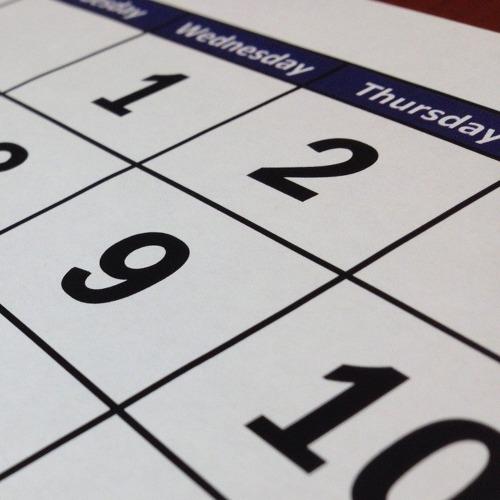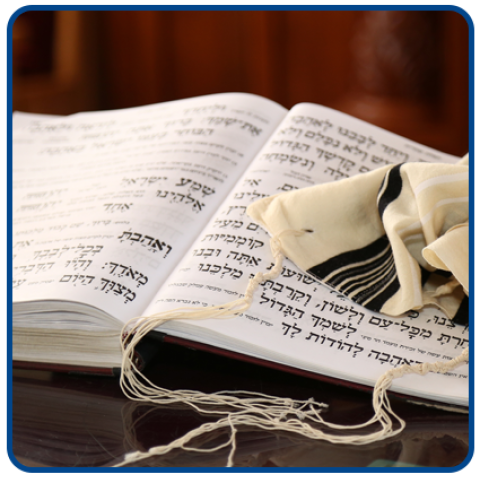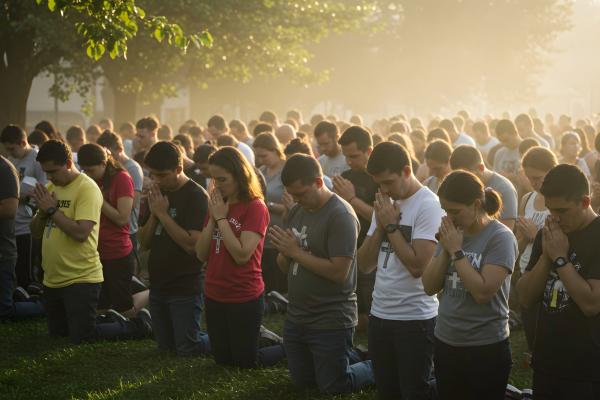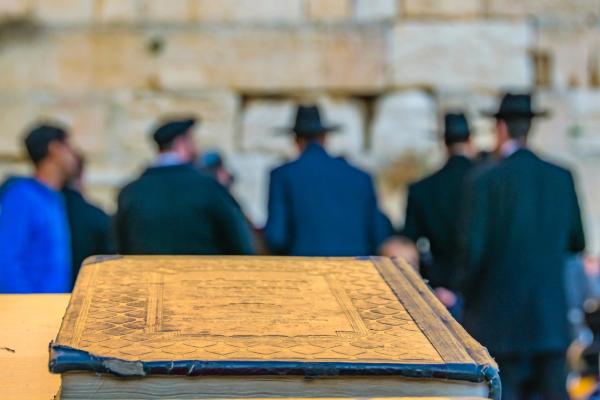Why do Jewish holidays change dates every year?
Actually, they don’t. They just follow a different calendar.
Most of the world uses the Gregorian calendar, which is based on the solar year. The Jewish calendar is called lunisolar, meaning it is a combination of the lunar and solar cycles. The lunar cycle is the time it takes the moon to orbit the Earth, which happens monthly. The solar calendar is based on the time it takes the Earth to orbit the Sun, which is one year. As a lunisolar calendar, Jewish months are based on the lunar cycle while the Jewish year follows the solar cycle. To understand this and other differences between the Jewish and Gregorian calendars, let’s start with the day.
A Jewish Day
The Jewish day begins at sunset rather than at midnight. This follows the biblical account of Creation, which states, “…And there was evening, and there was morning––the first day” and so on throughout the week in which God created all things (Genesis 1:5 NIV). In this system, a calendar date’s morning comes after its evening. For example, when celebrating a holiday, festive evening gatherings and meals come a whole night’s sleep before the holiday’s morning synagogue services.
A Jewish Week
The Jewish week consists of seven days, just like the Gregorian calendar. However, the Jewish week begins on Sunday and ends on Saturday. The workweek in Israel is Sunday through Thursday with the weekend on Friday and Saturday. In the Gregorian system, the week begins on Monday with a Saturday/Sunday weekend. Again, the Jewish calendar follows Scripture’s account of Creation. God rested on the seventh day, the Sabbath (Genesis 2:1–3). The Hebrew word for Sabbath is Shabbat, and it means “seventh day.” This is the Gregorian day of Saturday.
A Jewish Month
In the calendar system we’re used to, a typical month has 30 or 31 days – except February with 28 days in non-leap years. This Gregorian method of marking the passage of time is based on the solar cycle. In the Jewish calendar system, a month is based on the lunar cycles. Each month begins with the new moon and has either 29 or 30 days.
Jewish Months and Their Gregorian Equivalents
Nisan 30 days March/April
Iyar 29 days April/May
Sivan 30 days May/June
Tammuz 29 days June/July
Av 30 days July/August
Elul 29 days August/September
Tishrei 30 days September/October
Cheshvan 29 or 30 days October/November
Kislev 30 or 29 days November/December
Tevet 29 days December/January
Shevat 30 days January/February
Adar 20 days February/March
A Jewish Year
The Gregorian calendar system uses the year to determine the number and length of months. The Earth’s annual orbit around the Sun is divided into 12 months. However, because Scripture bases the beginnings of months on the appearance of new moons, the Jewish calendar determines the year by compiling months. Instead of a fixed year being divided by 12 months, set months are grouped to form a year.
This causes a problem similar to how that pesky quarter-day of a solar cycle creates 365 and ¼ days per year, requiring that we add an extra day to February every four years. Twelve lunar cycles add up to about 11 days short of a solar year. Without adjustment, Jewish calendar dates would eventually shift into different seasons. The Bible is clear that certain holidays are tied to harvest seasons of the year, so we can’t have that. To accommodate the difference, the Jewish calendar also factors in leap years, but in a different way.
Jewish Leap Years
To compensate and stay in sync with the seasons of a solar year, in 7 out of every 19 years, the Jewish calendar includes a 13th month called Adar II. But Adar II isn’t really the second month called Adar. It’s the first. Confused? Yes, it’s a bit complicated. The second Adar doesn’t slip into the calendar after the regular Adar. The leap-month Adar is inserted into the Jewish calendar before regular Adar and takes its name as well. The added month becomes Adar, and the regular Adar becomes Adar II. Thankfully, experts keep track of all this, and all we have to do is look it up on the internet or buy a wall calendar.
Jewish New Years
Interestingly, there are multiple Jewish New Years. The primary ones are the biblical and religious New Years. The difference is similar to that created by a fiscal year in the business world. In the biblical year, Nisan is the first month, occurring in March or April. As time went on, the Jewish sages came to believe that God created the Earth on the first day of the seventh month, Tishrei, which falls in either September or October. Thus, the Feast of Trumpets or Yom Teruah became known as Rosh Hashanah, meaning “head of the year,” on the 1st of Tishrei. The biblical year runs from Nisan to Adar, and the religious year is from Tishrei to Elul.
Jewish Year Tally
Another significant difference between the Hebrew and Gregorian calendars is seen in the year count. The Gregorian marks the presumed year of Jesus’ birth as Year 0, adding forward and subtracting backward through history from there. Thus, we have B.C. and A.D., more recently referred to as B.C.E. (Before the Common Era) and C.E. (Common Era). The Jewish tally of years begins with Creation and adds forward. Thus, according to the Gregorian calendar, Israel was reborn as a nation on May 14, 1948, C.E. On the Jewish calendar, the date was Iyar 5, 5708.
So, the next time you ponder how Yom Kippur can be weeks later or earlier than it was last year… or you marvel to see a Jewish New Year message ringing in a year almost 4,000 years larger than what you’re used to… you’ll know how it all makes sense. Everything is in order: Jewish holiday dates don’t change on the Jewish calendar, just on the Gregorian.
To learn more about the Jewish calendar, watch “The Significance of the Jewish Calendar” on the Jewish Voice television show.












